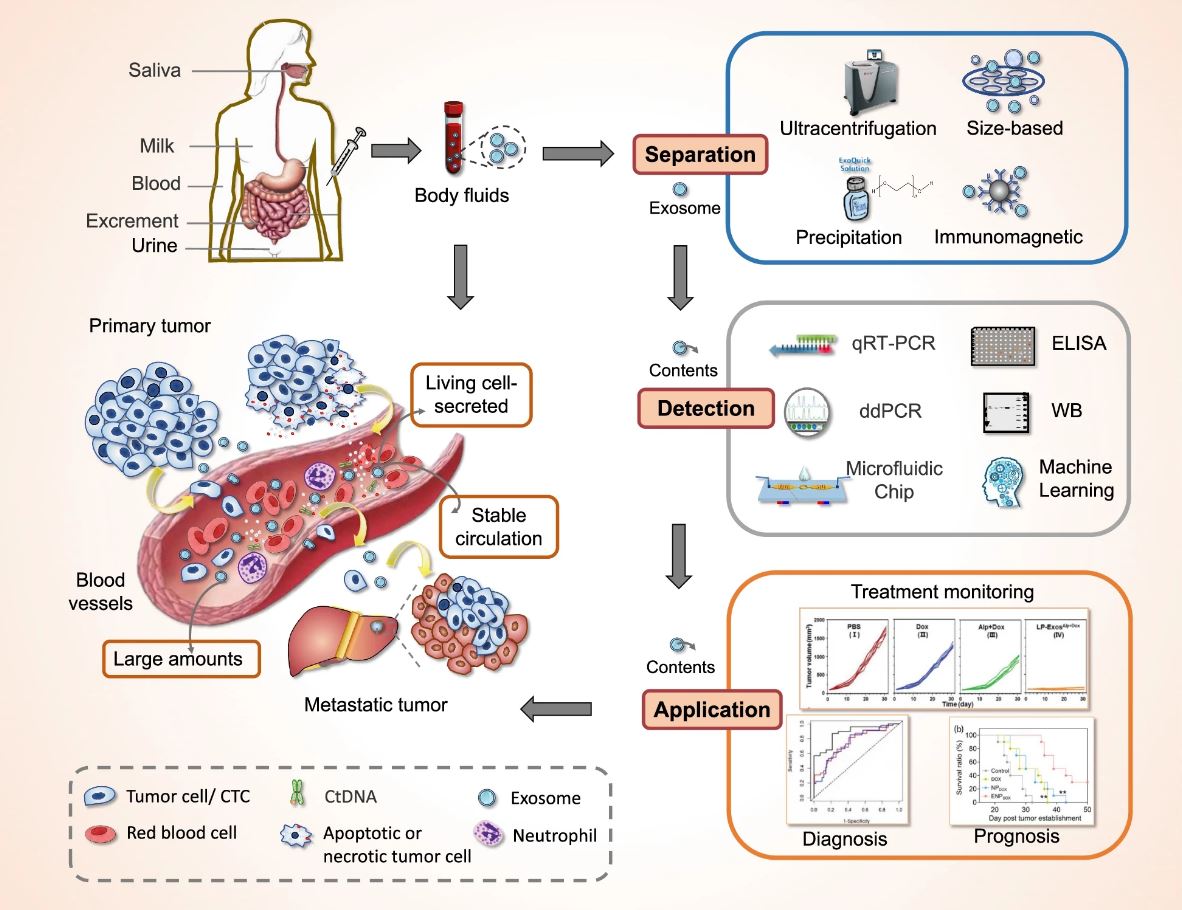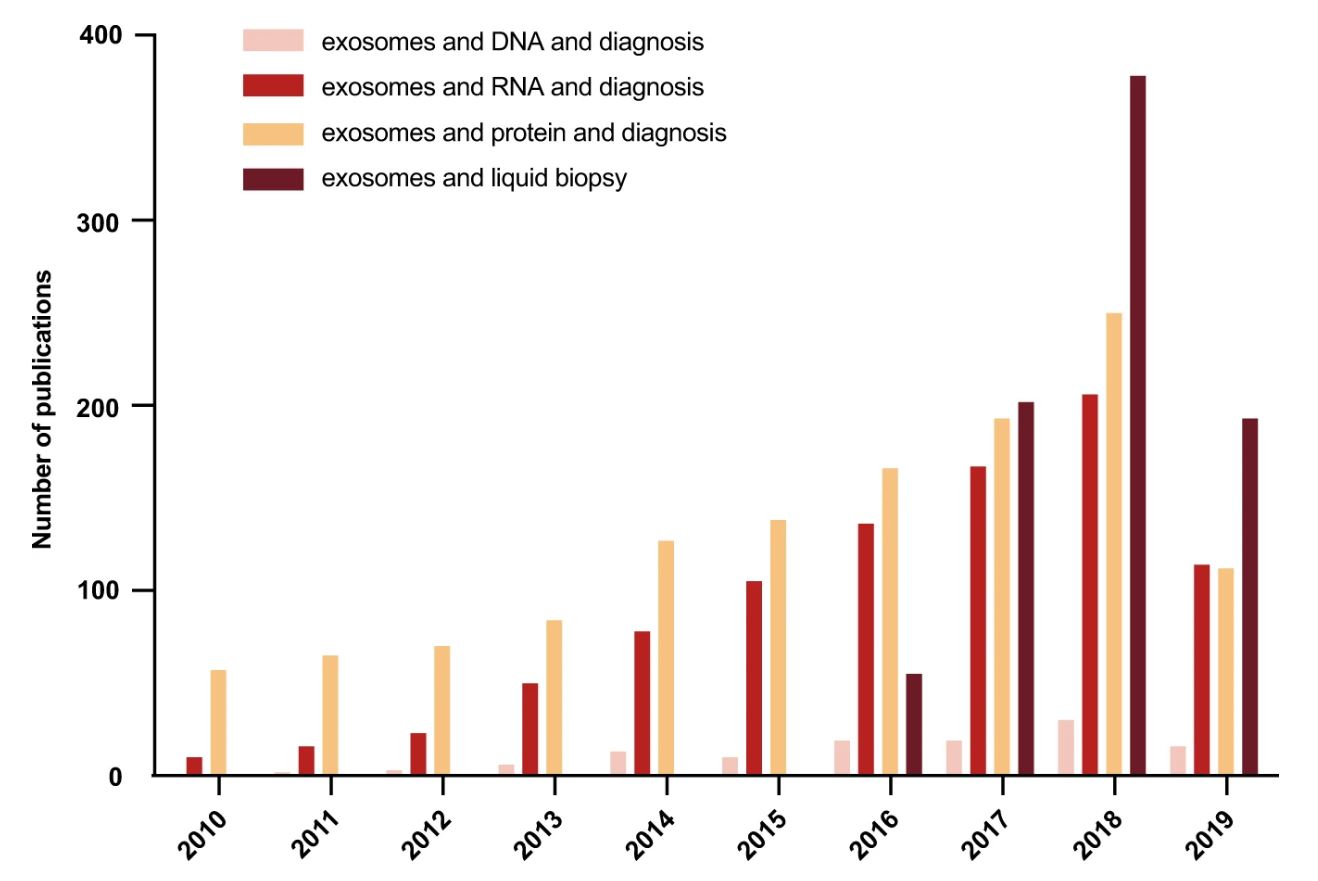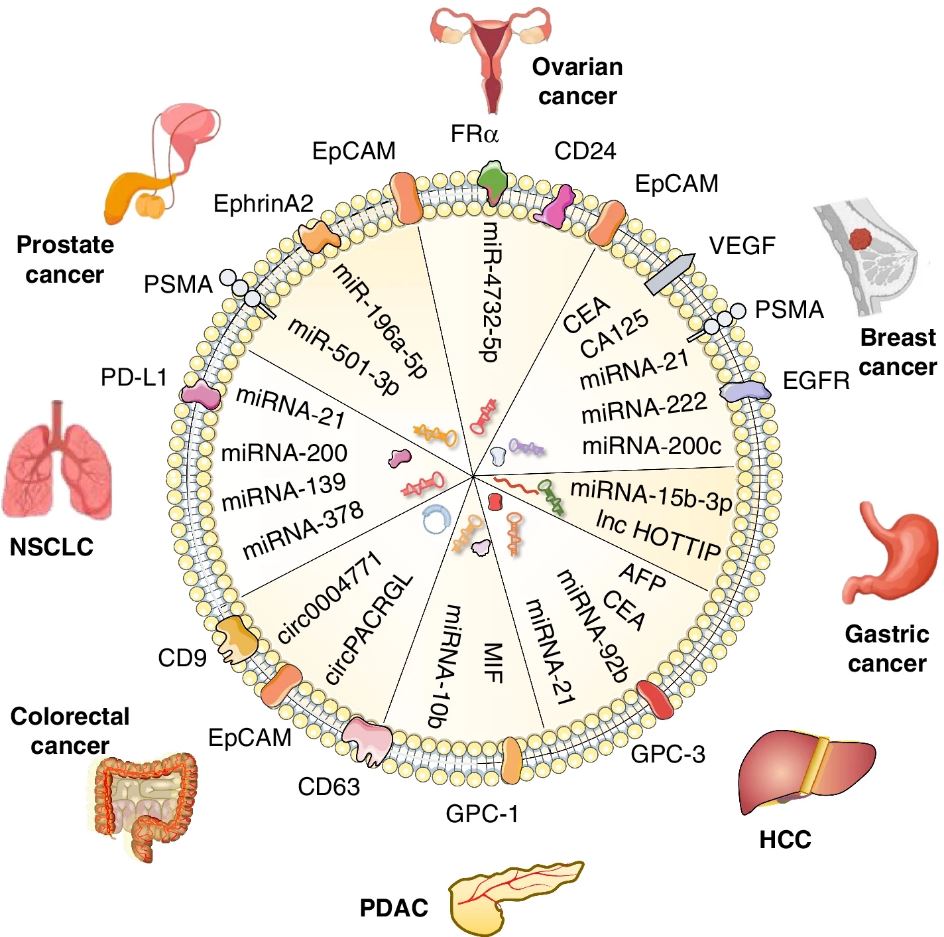Cancer is a leading cause of death worldwide, with a reported 1.7 million new cancer cases within the United States in 2019 alone. When cancer is suspected, a tissue biopsy is often the first step toward a diagnosis. This procedure, in which cells are collected for examination, remains the gold standard for cancer diagnosis. A tissue biopsy allows healthcare providers to determine if cancer is present, shows what type of cancer it is, and gives clues about the patient’s prognosis. Unfortunately, it’s often invasive, risky, costly, and painful. These factors make repeated biopsies difficult and an impractical method for tracking tumors over time.
In the search for complementary or alternative methods, researchers have found promise in minimally invasive liquid biopsies. In this approach, bodily fluids like blood or urine are collected, and their components, including circulating tumor cells (CTCs), extracellular vesicles (EVs), and cell-free DNA (cfDNA), are analyzed for biomarkers of disease. Exosomes, a subset of EVs, have been identified as a particularly promising component in liquid biopsies.1-4
Overview of exosomes as a new target for liquid biopsy. Figure from Yu et al. 2022.1 Reproduced under the Creative Commons license.
Why Exosomes?
These tiny EV’s were originally thought to be only vehicles for the disposal of cellular waste products, but exosomes are now being recognized for their important role in intercellular communication. Growing evidence suggests this is done through a variety of functional biomolecules, including nucleic acids, proteins, and lipids that exosomes transport. Now, researchers and clinicians are exploring whether the information carried by exosomes from their cells of origin might be useful for diagnosing and monitoring diseases. Tumor cell-derived exosomes, for example, have been shown to have immunomodulatory functions and play a role in signaling, direction, and invasion of metastatic cancer cells.1, 4-5
In addition to the informative cargo they transport, exosomes also display an array of other properties that make them well suited for disease diagnosis and monitoring. The following properties of exosomes make them attractive liquid biopsy candidates:
- Exosomes exist in almost all body fluids, and their membrane-bound structure protects their contents from degradation.
- They are secreted by living cells, including cancer cells, and contain information about these parent cells thought to be more representative than cfDNA, which is secreted only during cellular necrosis or apoptosis.
- Identifying exosomes is clear and simple relative to other liquid biopsy components due to their distinctive protein components and their size and shape when imaged via electron microscopy.
Despite the promise exosomal analysis holds for cancer diagnostic applications, additional research is needed before it becomes an accepted clinical procedure. As Lynn Sorbara, Ph.D., of NCI’s Division of Cancer Prevention, put it: “I think the major stumbling block for moving these liquid biopsy tests forward is there is not enough clinical verification and validation to know and feel comfortable that what we’re detecting with them is clinically meaningful.”1, 3-4
Publication frequencies of studies investigating different contents of exosomes in liquid biopsies for disease diagnosis over 10 years based on PubMed searches in January 2020. The number of studies in this new and fast moving field continues to grow. Figure from Zhou et al. 2020.4 Reproduced under the Creative Commons license.
The Current State of Research on Exosomes for Liquid Biopsy
Researchers have been hard at work over the past decade to validate the use of exosomes for liquid biopsies and mitigate the challenges associated with this technique. One of the main hurdles is effective, high-purity isolation due to their small size and heterogeneity in biofluids. For example, cancerous exosomes represent only a small percentage of exosomes in body fluid samples, which increases the requirements for ultrasensitive and specific detection. To solve these challenges, some researchers are developing methods to purify sub-populations of exosomes using immuno-capture with tissue-specific or cancer-specific antibodies.1, 4
Both traditional and advanced technologies are used to image or separate exosomes from various body fluids and detect their cargoes. The current push to categorize tissue-specific exosome surface proteins and components has allowed for better labeling and separating of exosomes, as well as exosome subsets, with antibodies. Though effective, antibodies validated for EV detection via flow cytometry and western blot are limited, and many more must be validated for the growing number of exosome and exosome subset-specific markers. Fluorescent dye-based detection is another common, more traditional technique for detecting EVs and exosomes, though it often requires tedious troubleshooting. One reason for this is that lipophilic fluorescent dyes used to stain exosome membranes typically have high levels of aggregation. These aggregates can be mistaken for exosomes by flow cytometers. Specialized dyes for exosomes are now being developed to mitigate this issue. Researchers have also developed several effective fluorescence-based techniques such as immunosorbent assays, the single molecule array (SiMoa) platform, and aptamer-based detection methods in recent years that build on more traditional detection methods. Advanced techniques like density gradient ultracentrifugation, size exclusion chromatography (SEC), immune-capture with magnetic beads, and acoustic-based isolation techniques have also been developed and hold promise.1
Cancer-derived exosomes are enriched in differentially expressed proteins and nucleic acids, which may act as biomarkers for the early diagnosis, stage classification, and prognosis prediction of different cancers. Figure from Yu et al. 2022.1 Reproduced under the Creative Commons license.
The Future of Exosomes in Cancer Detection and Treatment
Early screening and accurate diagnosis are known to be the primary factors in reducing mortality and increasing the recovery rate for patients with tumors or precancerous lesions. Exosomes hold great potential as possible diagnostic and prognostic biomarkers and have been investigated in a variety of cancers. In addition, exosomes are involved in metastasis, and tumor immune suppression, suggesting that they might one day play a role in disease treatment as well. In fact, some clinical trials have already begun to explore the efficacy of using exosomes as therapeutics. 1, 3
References
- Yu, D., Li, Y., Wang, M., Gu, J., Xu, W., Cai, H., Fang, X., & Zhang, X. Exosomes as a new frontier of cancer liquid biopsy. Molecular Cancer 21 (2022). https://doi.org/10.1186/s12943-022-01509-9
- “Cancer Data and Statistics.” Centers for Disease Control and Prevention, Centers for Disease Control and Prevention, 6 June 2022, https://www.cdc.gov/cancer/dcpc/data/index.htm
- Liquid Biopsy: Using Tumor DNA in Blood to Aid Cancer Care. (2017). National Cancer Institute. Retrieved September 22, 2022, from https://www.cancer.gov/news-events/cancer-currents-blog/2017/liquid-biopsy-detects-treats-cancer
- Zhou, B., Xu, K., Zheng, X., Chen, T., Wang, J., Song, Y., Shao, Y., Zheng, S. Application of exosomes as liquid biopsy in clinical diagnosis. Signal Transduction and Targeted Therapy 5, 1–14 (2020). https://doi.org/10.1038/s41392-020-00258-9
- Liu, Y., Shi, K., Chen, Y., Wu, X., Chen, Z., Cao, K., Tao, Y., Chen, X., Liao, J., Zhou, J. Exosomes and their role in cancer progression. Frontiers in Oncology 11 (2021). https://doi.org/10.3389/fonc.2021.639159









